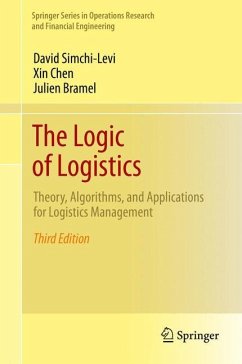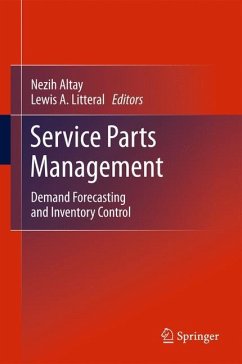
Principles of Inventory Management
When You Are Down to Four, Order More
Versandkostenfrei!
Versandfertig in 6-10 Tagen
38,99 €
inkl. MwSt.
Weitere Ausgaben:

PAYBACK Punkte
19 °P sammeln!
Ensuring the availability of materials and goods is one of the major responsibilities and goals of inventory management, requiring various techniques such as mathematical modeling and computational methods. This unique textbook is devoted to models and solutions in inventory management.It begins with an introductory chapter in which the basics of inventory systems and mathematical assumptions for all models are grouped together, thereafter mathematical principles and applications are treated as they relate to one another. In this clearly organized systematic exposition, a unique balance is maintained between simplicity and rigor. Topics related to multiechelon systems are discussed in the latter chapters. An important feature of this work can be found in the beautiful examples in the final chapter in which a relationship between different kinds of real situations in industry and theoretical models are discussed in detail.This graduate textbook will appeal to senior and first year graduate students in operations research, industrial engineering, and quantitative MBA programs and serves as a reference resource for the industrial world.
Inventories are prevalent everywhere in the commercial world, whether it be in retail stores, manufacturing facilities, government stockpile material, Federal Reserve banks, or even your own household. This textbook examines basic mathematical techniques used to sufficiently manage inventories by using various computational methods and mathematical models. Such models discussed include: EOQ model and extensions, power-of-two models, single and multi-period models, probabilistic lot sizing models, multi-echelon stochastic models, Laplace and Normal demand models, exact Poisson model, and many more.
Principles of Inventory Management begins with an introductory chapter in which the basics of inventory systems and mathematical assumptions for all models are grouped together. The text is presented in a way such that each section can be read independently, and so the order in which the reader approaches the book can be inconsequential. It contains both deterministic and stochastic models along with algorithms that can be employed to find solutions to a variety of inventory control problems.
Key topics include:
_ Economic order quantity (EOQ) model
_ Power-of-two policies
_ Dynamic lot sizing
_ Single and multi-period stochastic models
_ Echelon-based approaches
_ Multi-echelon systems
_ Single and multi-item models.
With exercises at the end of each chapter and a clear, systematic exposition, this textbook will appeal to advanced undergraduate and first-year graduate students in operations research, industrial engineering, and quantitative MBA programs. It also serves as a reference for professionals in both industry and government worlds. The prerequisite courses include introductory optimization methods, probability theory (non-measure theoretic), and stochastic processes.
Principles of Inventory Management begins with an introductory chapter in which the basics of inventory systems and mathematical assumptions for all models are grouped together. The text is presented in a way such that each section can be read independently, and so the order in which the reader approaches the book can be inconsequential. It contains both deterministic and stochastic models along with algorithms that can be employed to find solutions to a variety of inventory control problems.
Key topics include:
_ Economic order quantity (EOQ) model
_ Power-of-two policies
_ Dynamic lot sizing
_ Single and multi-period stochastic models
_ Echelon-based approaches
_ Multi-echelon systems
_ Single and multi-item models.
With exercises at the end of each chapter and a clear, systematic exposition, this textbook will appeal to advanced undergraduate and first-year graduate students in operations research, industrial engineering, and quantitative MBA programs. It also serves as a reference for professionals in both industry and government worlds. The prerequisite courses include introductory optimization methods, probability theory (non-measure theoretic), and stochastic processes.













